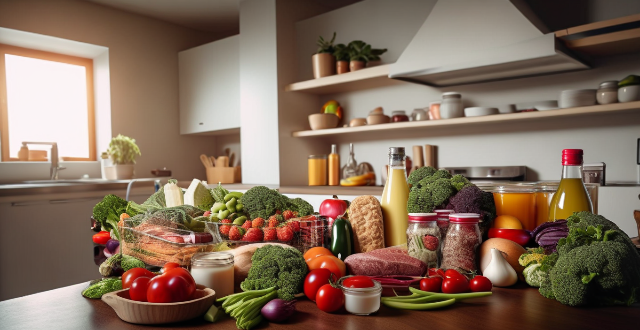Proper handling and storage of food at home are essential to maintain freshness, prevent spoilage, and avoid foodborne illnesses. Key practices include keeping the refrigerator at or below 40°F (4°C), using airtight containers for leftovers, regularly checking expiration dates, labeling and dating frozen items, storing dry goods in a cool, dry place, washing hands and surfaces between handling different types of food, thawing food in the refrigerator, cooking to proper temperatures, and avoiding cross-contamination. These guidelines help ensure food stays fresh, safe, and delicious until it's time to prepare your next meal.

Best Practices for Handling and Storing Food at Home
Proper handling and storage of food are crucial to maintain its freshness, prevent spoilage, and avoid foodborne illnesses. Here are some best practices for handling and storing food at home:
Refrigeration
1. Store Temperature: Keep your refrigerator at or below 40°F (4°C) and your freezer at 0°F (-18°C) to slow bacterial growth.
2. Avoid Overcrowding: Overloading the fridge can block air circulation, leading to uneven cooling.
3. Separate Raw and Cooked Foods: Store raw meats, poultry, and seafood on the bottom shelf to prevent cross-contamination.
4. Use Storage Containers: Store leftovers in clear, airtight containers to avoid leaks and make it easy to identify contents.
5. Check Expiration Dates: Regularly review expiration dates and discard foods that have passed their prime.
Freezing
1. Label and Date: Clearly label and date all frozen items to keep track of their age.
2. Portion Control: Freeze foods in portion sizes that you typically use to avoid thawing more than you need.
3. Avoid Freezer Burn: Wrap foods tightly in moisture-proof wrap or bags to prevent freezer burn caused by dehydration and oxidation.
4. Don't Mix Temperatures: Fluctuating temperatures can cause ice crystals to form, damaging cell structure and quality.
Pantry Storage
1. Dry and Cool: Store dry goods like grains, pasta, and cereals in a cool, dry place away from direct sunlight.
2. Rotation System: Use the First In, First Out (FIFO) method to ensure older products are used before newer ones.
3. Cleanliness: Keep shelves clean and free of pests by regularly wiping them down and checking for signs of infestation.
4. Proper Sealing: Ensure packages are well-sealed to protect against pests and moisture.
General Guidelines
1. Wash Hands and Surfaces: Clean your hands, cutting boards, and utensils thoroughly between handling different types of food.
2. Safe Thawing: Thaw food in the refrigerator, not on the counter, to prevent bacterial growth.
3. Cook to Proper Temperatures: Use a thermometer to ensure food reaches the correct internal temperature for safety.
4. Avoid Cross-Contamination: Use separate cutting boards for raw meats and vegetables to prevent cross-contamination.
By following these best practices, you can help ensure that your food stays fresh, safe, and delicious until it's time to prepare your next meal.